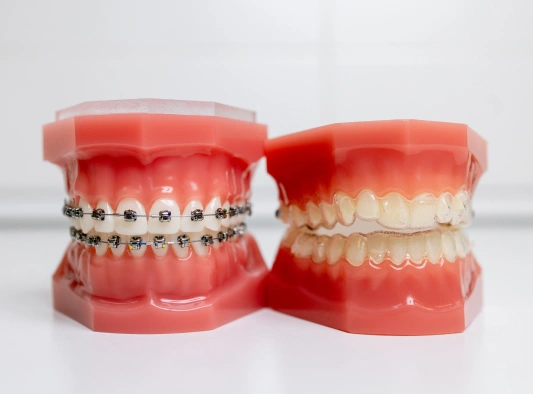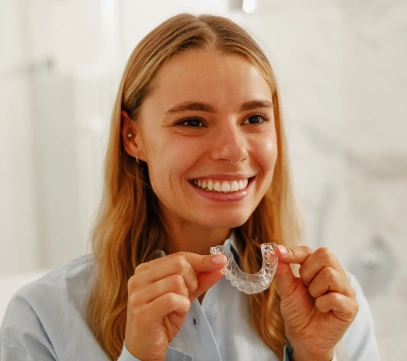
Straighten Your Smile With Confidence
Types of Orthodontic Treatments

Traditional Braces
Traditional braces have come a long way. Today’s versions are smaller, smoother, and more comfortable than ever before. They work by using gentle, continuous pressure to move your teeth into the right position over time. Braces are especially effective for correcting more complex alignment and bite issues that clear aligners may not fully address.
Many patients appreciate that braces don’t require removal or daily maintenance beyond normal brushing and flossing—once they’re on, they’re always working for you. Plus, you can even choose from different band colors for a touch of personality.

Clear Aligners
For patients who prefer a more subtle and flexible treatment, clear aligners are a great choice. These nearly invisible trays are custom-fitted to your teeth and gently shift them into place over time. You’ll receive a series of aligners, each designed to move your teeth slightly closer to their ideal position.
Clear aligners are popular among adults and teens because they blend seamlessly into everyday life. You can remove them to eat, drink, brush, and floss, making it easy to maintain your usual habits without dietary restrictions. This flexibility also makes them ideal for professionals or anyone who wants a more discreet orthodontic experience.
Benefits of Orthodontic Treatment
- Easier brushing and flossing for better hygiene
- Reduced risk of cavities and gum issues
- More balanced bite and improved chewing function
- Prevention of uneven tooth wear
- Enhanced confidence and self-esteem
Personalized Care for Every Smile
Every smile is unique, and so is every treatment plan. Our team takes time to discuss your goals, review your dental health, and design a plan that fits your lifestyle. Whether you choose braces or clear aligners, you can expect compassionate care, clear communication, and steady support throughout your orthodontic journey.
Beyond aesthetics, straight teeth make it easier to clean between teeth, reducing your risk of decay and gum issues. They also help distribute biting forces evenly, preventing uneven wear and jaw strain. A well-aligned bite contributes to better function, comfort, and long-term oral health.